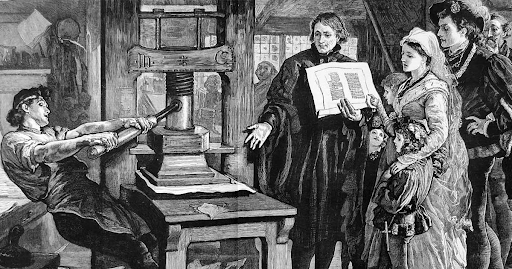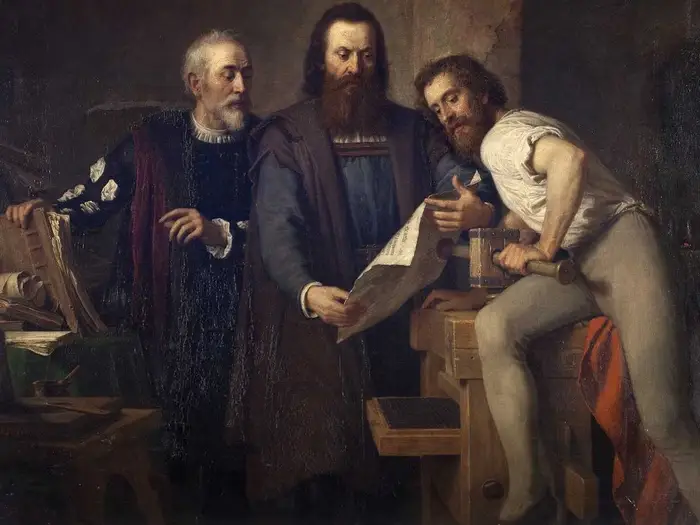
Woodcut of William Caxton. William Hughes. 1824 (Courtesy of The British Museum)
Boosting the Renaissance

Woodcut of William Caxton. William Hughes. 1824 (Courtesy of The British Museum)
When the Renaissance spread to other countries, there was a high demand for philosophical works from ancient authors like Aristotle, Cicero, and St. Augustine. Works from authors like Francesco Petrarch and Giovanni Boccaccio were massively printed, which helped promote Humanism.

Benjamin Franklin and associates at Franklin's printing press in 1732 (Courtesy of Public Domain)

William Caxton--Examining First Proof Sheet from His Printing Press in Westminster Abbey, A.D. 1474 (Courtesy of Smithsonian American Art Museum)
The first newspapers emerged, which helped spread information and news faster. An English printer named William Caxton introduced the printing press to England in 1476. He printed 100 books in English, including Canterbury Tales, and helped contributed to English literature. Caxton was the pioneer of English printing and was the first English printer, publisher, and translator.

The Caxton Celebration William Caxton showing specimens of his printing to King Edward IV and his Queen (Courtesy of Public Domain)

Fust, Gutenberg & Schoeffer (Courtesy of Gutenberg's Apprentice)
Works from famous scholars like Brahe, Copernicus, and Erasmus helped develop modern science into Europe. The printing press helped spread discoveries and support investigations. Brahe had a printing press near his observatory to promote his innovations, and Copernicus used astronomical works to argue that the Earth revolves around the Sun.